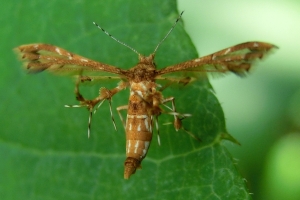2. Weitere Informationen
2.1. Faunistik
Nach [Global Biodiversity Information Facility] kommt die Art in Australien, Indien, Hongkong, Singapur, Thailand, Taiwan, Jemen, Elfenbeinküste, Indonesien, Sri Lanka, Malaysia, Uganda und Südafrika vor.
Locus typicus gemäß Erstbeschreibung: Yemen.
(Autor: Michel Kettner)




![Vorkommen in Jemen [Locus typicus]](/res/img/flag/ye.gif)
![Vorkommen in Oman [Moths of India]](/res/img/flag/om.gif)
![Vorkommen in Hongkong [Global Biodiversity Information Facility]](/res/img/flag/hk.gif)
![Vorkommen in Japan [Moths of India]](/res/img/flag/jp.gif)
![Vorkommen in Taiwan [Global Biodiversity Information Facility]](/res/img/flag/tw.gif)
![Vorkommen in Indien (Festland) [Global Biodiversity Information Facility]](/res/img/flag/in.gif)
![Vorkommen in Sri Lanka [Global Biodiversity Information Facility]](/res/img/flag/lk.gif)
![Vorkommen in Myanmar [Moths of India]](/res/img/flag/mm.gif)
![Vorkommen in Thailand [Global Biodiversity Information Facility]](/res/img/flag/th.gif)
![Vorkommen in Malaysia [Global Biodiversity Information Facility]](/res/img/flag/my.gif)
![Vorkommen in Singapur [Global Biodiversity Information Facility]](/res/img/flag/sg.gif)
![Vorkommen in Indonesien [Foto im Forum]](/res/img/flag/id.gif)
![Vorkommen in Mali [AfroMoths]](/res/img/flag/ml.gif)
![Vorkommen in Äthiopien [AfroMoths]](/res/img/flag/et.gif)
![Vorkommen in Somalia [Moths of India]](/res/img/flag/so.gif)
![Vorkommen in Elfenbeinküste [Global Biodiversity Information Facility]](/res/img/flag/ci.gif)
![Vorkommen in Ghana [AfroMoths]](/res/img/flag/gh.gif)
![Vorkommen in Nigeria [AfroMoths]](/res/img/flag/ng.gif)
![Vorkommen in der Republik Kongo [AfroMoths]](/res/img/flag/cg.gif)
![Vorkommen in Uganda [Global Biodiversity Information Facility]](/res/img/flag/ug.gif)
![Vorkommen in Kenia [AfroMoths]](/res/img/flag/ke.gif)
![Vorkommen in Tansania [AfroMoths]](/res/img/flag/tz.gif)
![Vorkommen in Sambia [Moths of India]](/res/img/flag/zm.gif)
![Vorkommen in Malawi [Moths of India]](/res/img/flag/mw.gif)
![Vorkommen in Mosambik [Moths of India]](/res/img/flag/mz.gif)
![Vorkommen in Namibia [AfroMoths]](/res/img/flag/na.gif)
![Vorkommen in Simbabwe [Moths of India]](/res/img/flag/zw.gif)
![Vorkommen in Südafrika [Global Biodiversity Information Facility]](/res/img/flag/za.gif)
![Vorkommen in Australien [Global Biodiversity Information Facility]](/res/img/flag/au.png)



